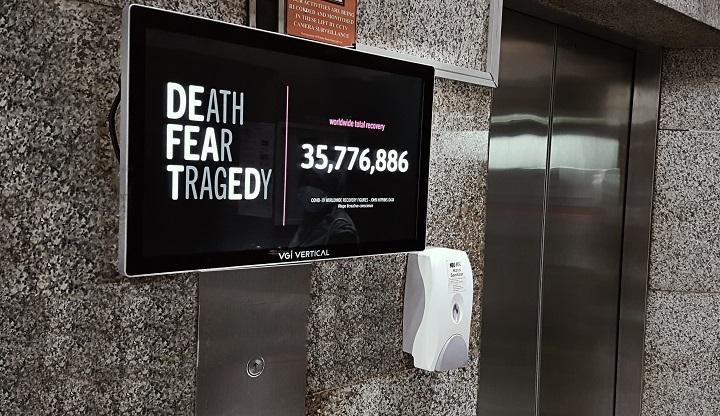Researchers have made a major breakthrough using artificial intelligence that could revolutionize the hunt for new medicines.
The scientists have created A.I. software that uses a protein’s DNA sequence to predict its three-dimensional structure to within an atom’s width of accuracy.
The achievement, which solves a 50-year-old challenge in molecular biology, was accomplished by a team from DeepMind, the London-based artificial intelligence company that is part of Google parent Alphabet.
[…]
Across more than 100 proteins, DeepMind’s A.I. software, which it called AlphaFold 2, was able to predict the structure to within about an atom’s width of accuracy in two-thirds of cases and was highly accurate in most of the remaining one-third of cases, according to John Moult, a molecular biologist at the University of Maryland who is director of the competition, called the Critical Assessment of Structure Prediction, or CASP. It was far better than any other method in the competition, he said.
[…]
DeepMind had not yet determined how it would provide academic researchers with access to the protein structure prediction software or whether it would seek commercial collaborations with pharmaceutical and biotechnology firms. He said the company would announce “further details on how we’re going to be able to give access to the system in a scalable way” sometime next year.
“This computational work represents a stunning advance on the protein-folding problem,” Venki Ramakrishnan, a Nobel Prize–winning structural biologist who is also the outgoing president of the Royal Society, Britain’s most prestigious scientific body, said of AlphaFold 2.
Janet Thornton, an expert in protein structure and former director of the European Molecular Biology Laboratory’s European Bioinformatics Institute, said that DeepMind’s breakthrough opened up the way to mapping the entire “human proteome”—the set of all proteins found within the human body. Currently, only about a quarter of human proteins have been used as targets for medicines, she said. Now, many more proteins could be targeted, creating a huge opportunity to invent new medicines.
[…]
As part of CASP’s efforts to verify the capabilities of DeepMind’s system, Lupas used the predictions from AlphaFold 2 to see if it could solve the final portion of a protein’s structure that he had been unable to complete using X-ray crystallography for more than a decade. With the predictions generated by AlphaFold 2, Lupas said he was able to determine the shape of the final protein segment in just half an hour.
AlphaFold 2 has also already been used to accurately predict the structure of a protein called ORF3a that is found in SARS-CoV-2, the virus that causes COVID-19, which scientists might be able to use as a target for future treatments.
Lupas said he thought the A.I. software would “change the game entirely” for those who work on proteins. Currently, DNA sequences are known for about 200 million proteins, and tens of millions more are being discovered every year. But 3D structures have been mapped for less than 200,000 of them.
AlphaFold 2 was only trained to predict the structure of single proteins. But in nature, proteins are often present in complex arrangements with other proteins. Jumper said the next step was to develop an A.I. system that could predict complicated dynamics between proteins—such as how two proteins will bind to one another or the way that proteins in close proximity morph one another’s shapes.
[…]
Source: DeepMind’s A.I. can now predict protein shapes from their DNA sequences | Fortune




